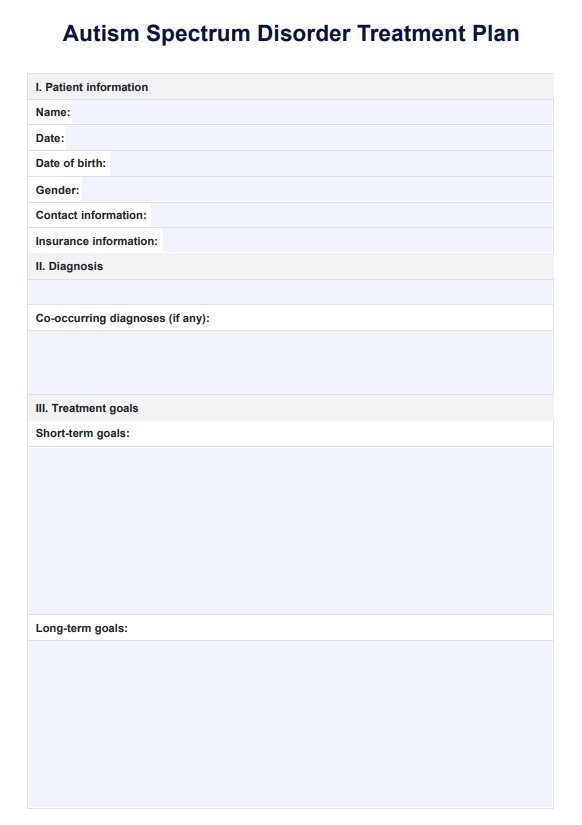Common interventions in an Autism Spectrum Disorder Treatment Plan may include behavioral interventions, social skills training, and communication and language skills training, such as the Early Start Denver Model (for children between the ages of 12 and 48 months). Parent training and medication management also play a significant role in ASD treatment.

Autism Spectrum Disorder Treatment Plans
Looking for effective and individualized treatment plans for Autism Spectrum Disorder? Our comprehensive templates and progress monitoring can help. Learn more.
Autism Spectrum Disorder Treatment Plans Template
Commonly asked questions
Progress is monitored by collecting data on target desired behaviors during therapy sessions. Standardized assessment tools, such as the Vineland Adaptive Behavior Scales, may also be used to assess progress toward treatment goals. The therapist analyzes and interprets the data to make necessary adjustments to the treatment plan.
Discrete trial training (DTT) and pivotal response training (PRT) are two applied behavior analysis (ABA) teaching methods. DTT breaks down skills into small parts and teaches them through trials to create a specific response. On the other hand, PRT is a child-led, play-based therapy for autism, focusing on improving critical areas of development like motivation and social interaction.
EHR and practice management software
Get started for free
*No credit card required
Free
$0/usd
Unlimited clients
Telehealth
1GB of storage
Client portal text
Automated billing and online payments











